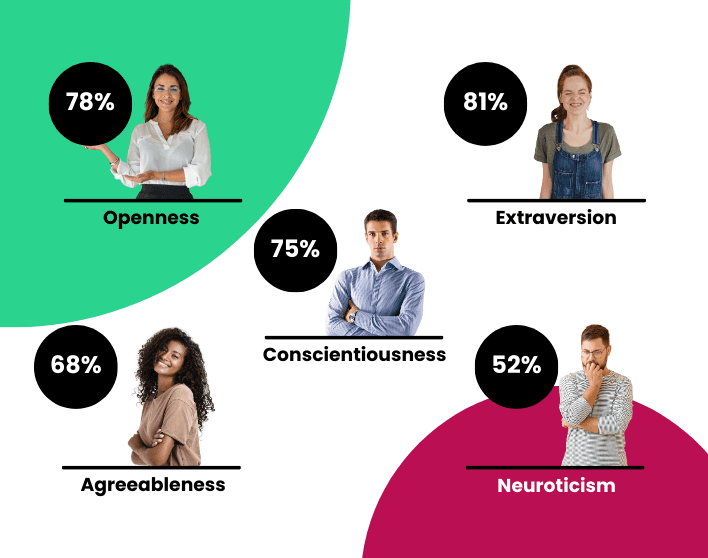The Bryq Team
HR Experts
Full cycle recruiting involves managing the entire hiring process from end to end. Read on to find out more about this and how you can do it in your business.
What Is Full Cycle Recruiting?
Full cycle recruiting refers to the entire recruiting process from start to finish. Often, an HR person who does the full cycle recruiting process is called a full cycle recruiter.
This means that they take charge of the process right from when the hiring manager lets the HR department know that there is a vacancy to fill. They conduct the process right through to onboarding the new employee when they start work.
This is a large amount of work for an HR department, which is why so many outsource rather than doing full life cycle recruiting themselves. Time to hire can also be longer when you do the recruiting in-house.
Steps of Full Cycle Recruiting
There are many stages to full cycle recruiting that an HR department will go through. They can outsource many of these stages, but in full cycling recruiting you’re choosing to do all of it yourself. This includes:
Preparation
The first thing to do once you’re aware of the job requisition is to consider who your ideal candidate for this position would be. What experience and characteristics do they need to have to be successful in this role?
Then, update or create the job description. Consider what the role entails and what qualifications, if any, the qualified candidates would need to have. Create a description which clearly outlines the tasks, roles, and responsibilities of the position.
Source
Next in the full cycle recruiting process, you are ready to move into sourcing candidates. Start by crafting a fantastic job ad that explains the job well and sells your organization to potential applicants.
Perhaps your recruit will come from a job board, though that is rarer these days. Try these recruitment strategies:
Social media recruitment – up to 79% of job seekers use social media to look for a job so this recruiting strategy can be highly effective, depending on the type of role you are advertising. Keep in mind the target demographics of each type of social media – for example, LinkedIn may skew older while Instagram may get you some younger applicants.
Employee referral programs – talent acquisition via referral is becoming more common as employee referral programs often result in cheaper hiring processes and better staff retention.
Internal recruitment – perhaps there’s someone already in your organization who would be the perfect candidate for this role. Advertise it on shared internal platforms to get more internal applicants. One study found that around 51% of employed people were looking for a new job. Why not keep people in your organization?
Selection
Once you have some applications for the role, you need to go through them and see who a good fit for the role would be. Hopefully, you have gotten a great talent pool with some amazing candidates you can choose to interview.
To be sure that your candidates are suitable for the role, many recruiters choose to use cognitive ability testing on the candidates as part of the hiring process. In this method, you choose your best candidates and test them on a skill related to the role, such as abstract reasoning. Then you interview those who scored best on the test.
This stage of the recruitment process now comes to interviewing. Most hiring managers like to conduct in-person interviews so they can meet the candidates for themselves. This is a great way to ask the tough questions and get a feel as to whether the candidate would be a good fit in the team.
Offer
Once the hiring manager decides who they want to hire, it will be your role as the recruiter to put together job offers for successful candidates. Most people call the candidate to let them know they are successful and then follow up with a job offer in an email.
During this stage, you may also need to engage in negotiation with the candidate. They may want a higher salary or more holiday days. Whatever it is, you will need to come to terms that you can both agree on before they will accept the offer.
Onboarding
Once the job offer is accepted, it’s not over yet for the full cycle recruiter. You must now onboard the new employee. This involves introducing and orienting them to your organizations. You’ll need to familiarize them with your organization’s processes and policies.
Onboarding can be a critical factor in staff retention. Employees who go through a fantastic onboarding process are 82% more likely to stay in the company. Productivity can increase by as much as 70% due to great onboarding as well. As they say, first impressions go a long way.
Lastly in the onboarding process is ongoing training and development. People want to feel like they are learning and moving ahead. 87% of millennials say that development and career opportunities are important to them.
Full cycle recruiting has a lot of steps, as you can see. If you have the time and resources to put into this, it is a fantastic way for people to start in your organization. However, if you aren’t going to be able to fully commit, you’re likely to be better off outsourcing some parts of the process. This way the recruit will still experience a fantastic hiring process.








